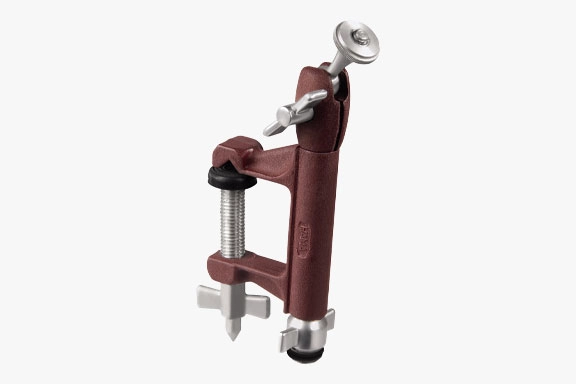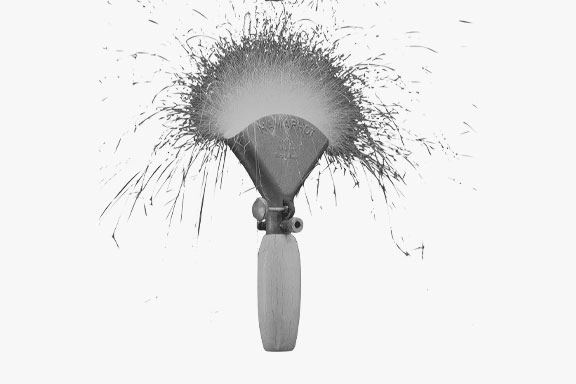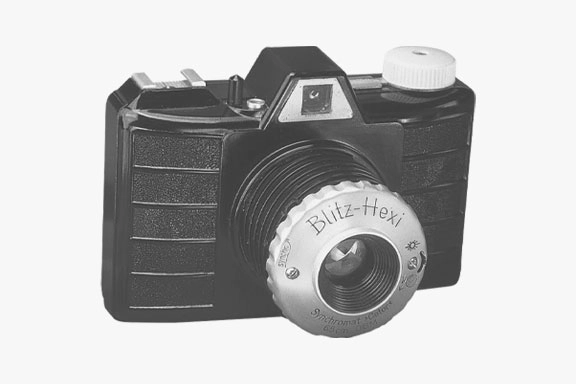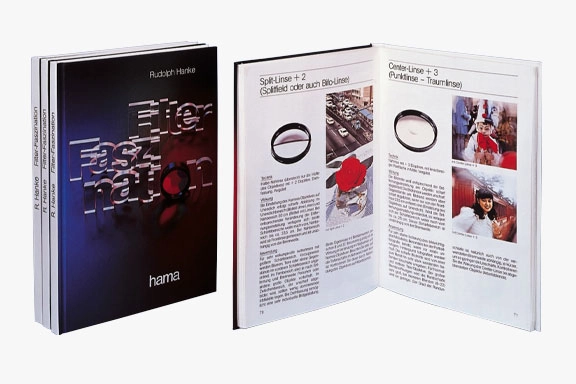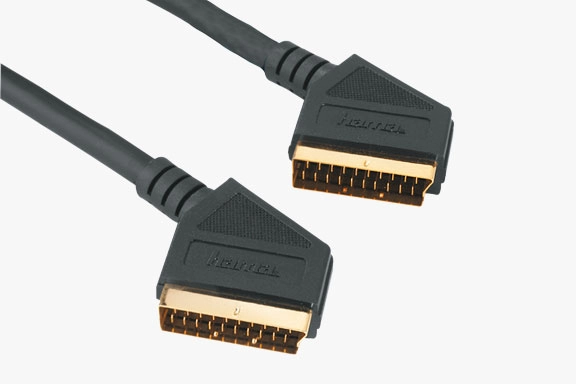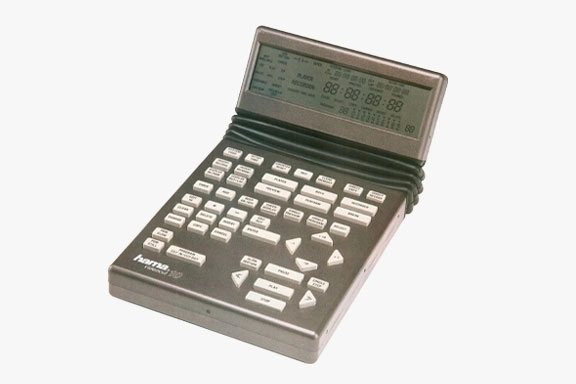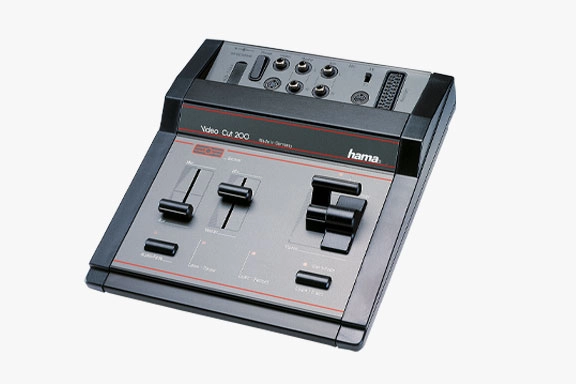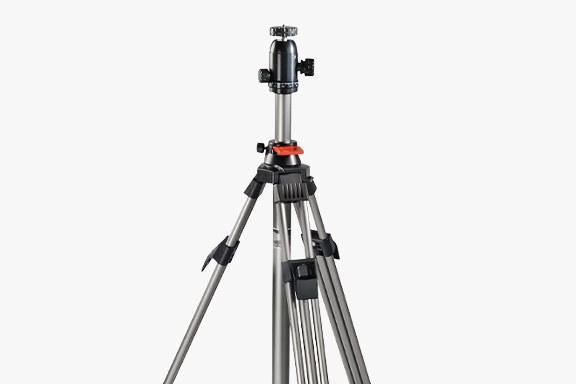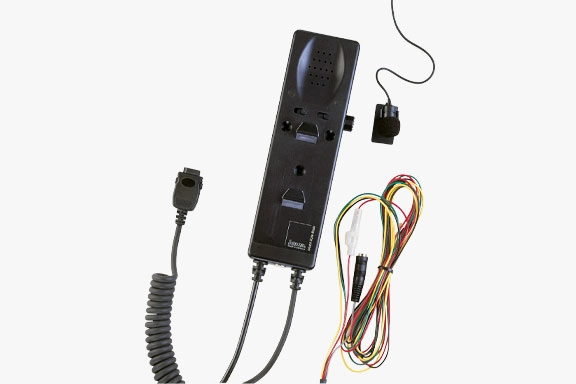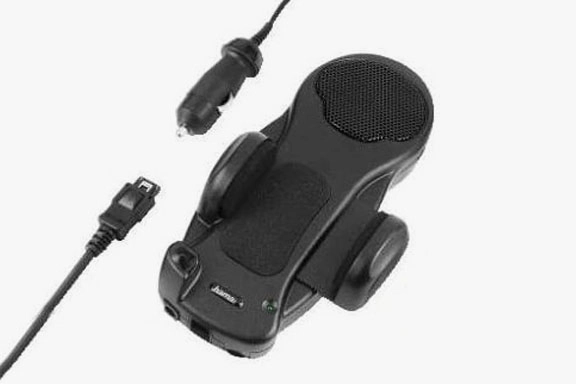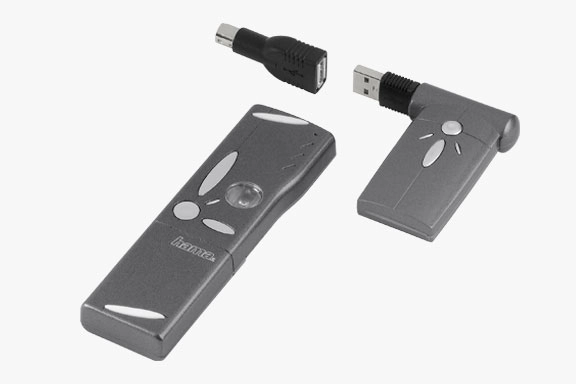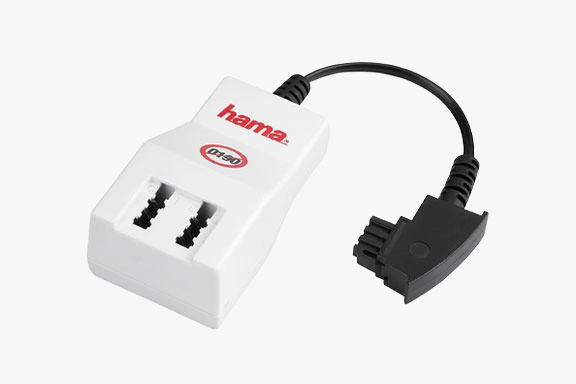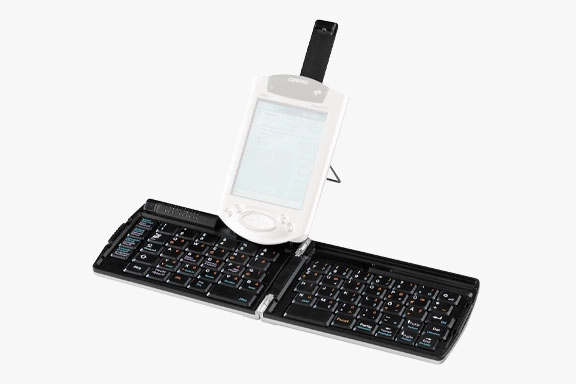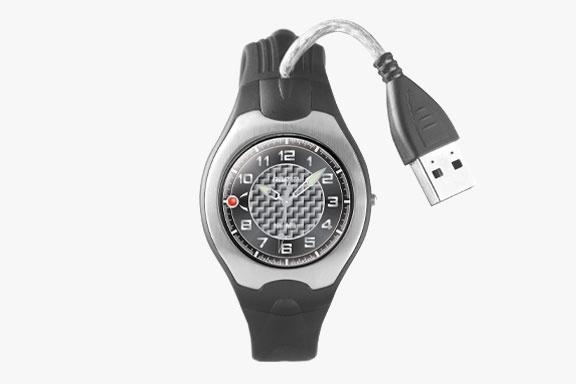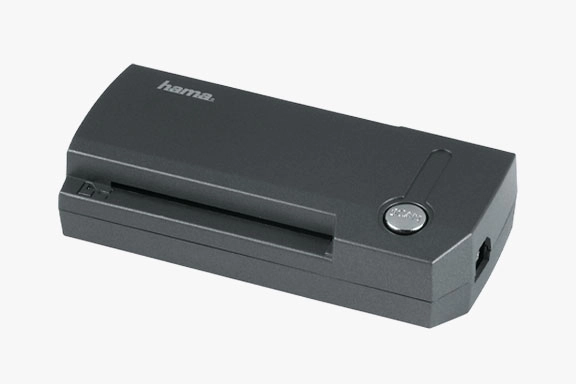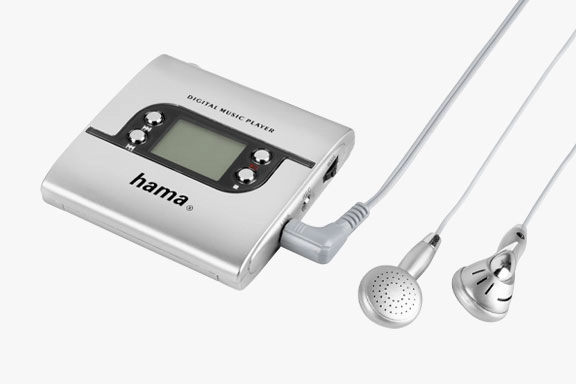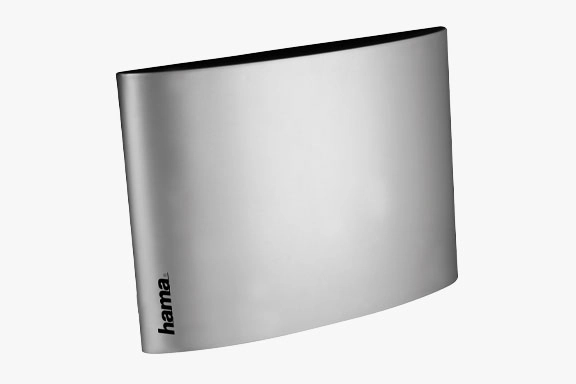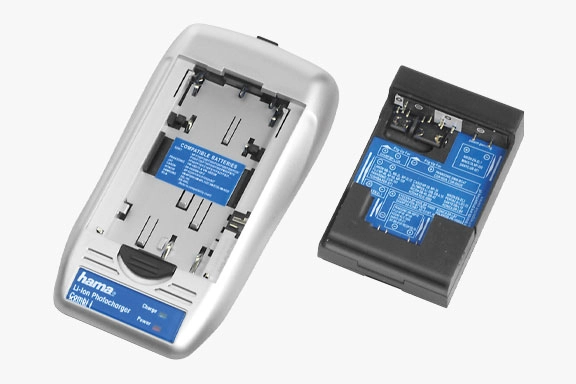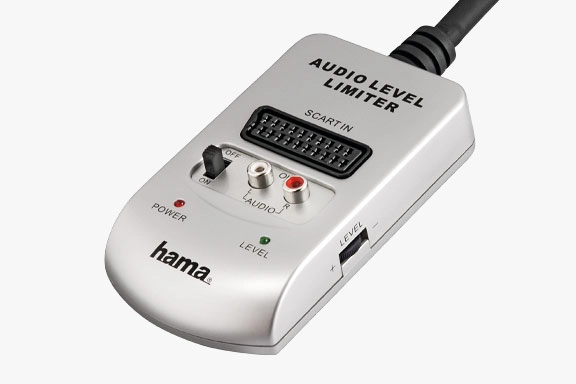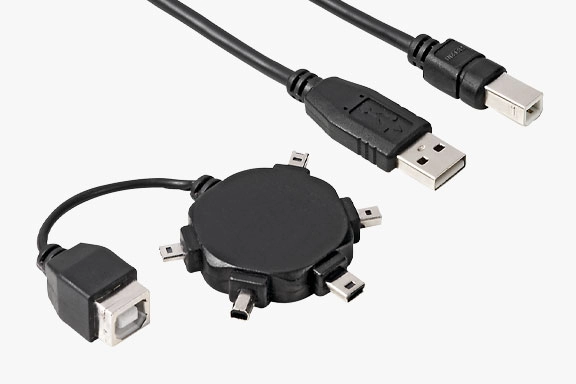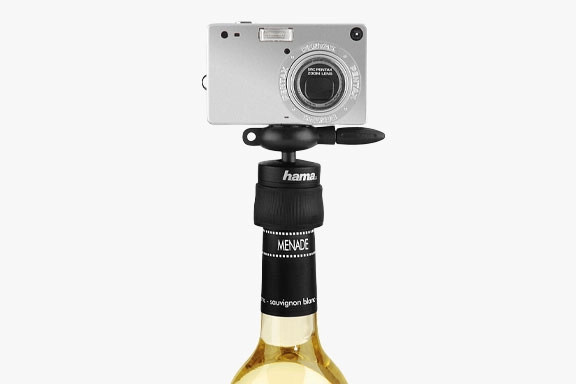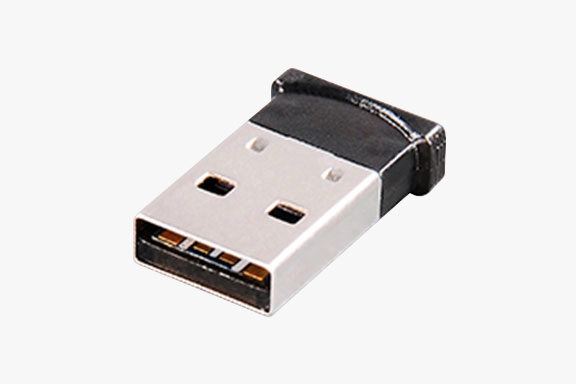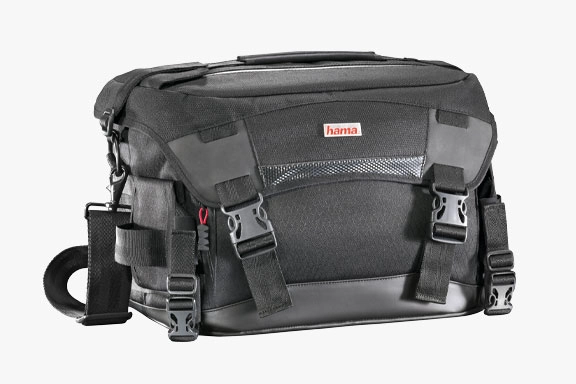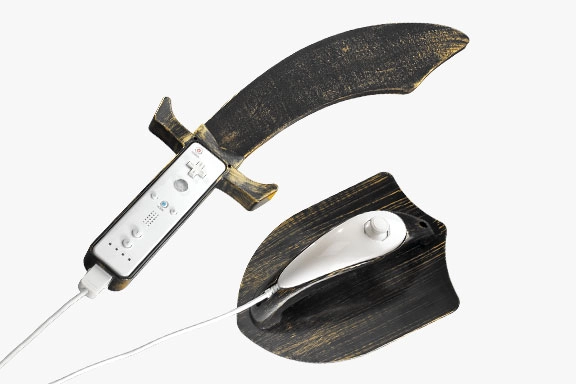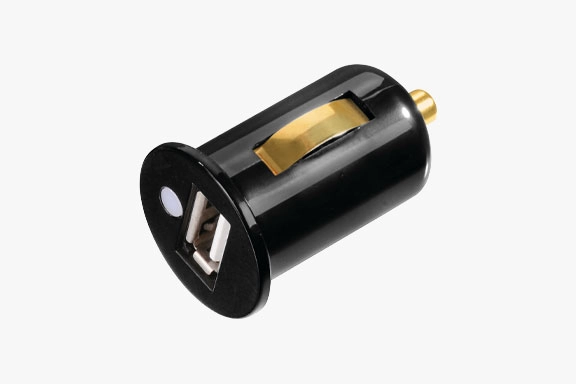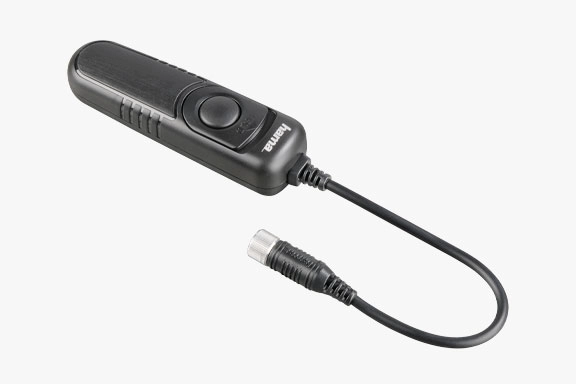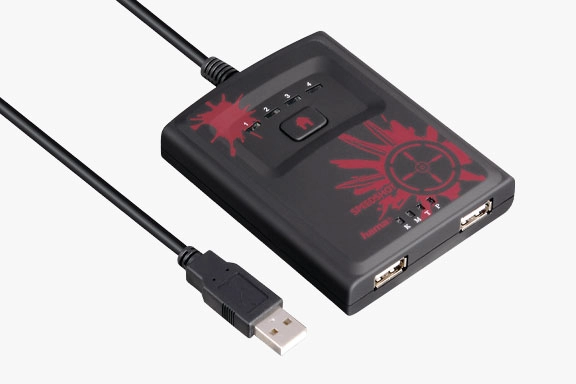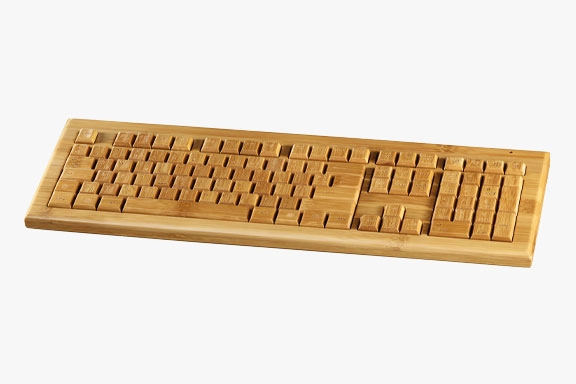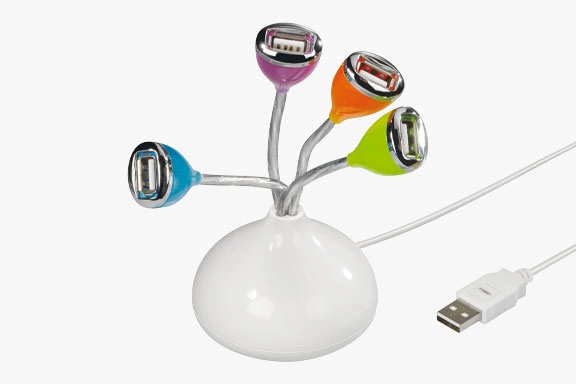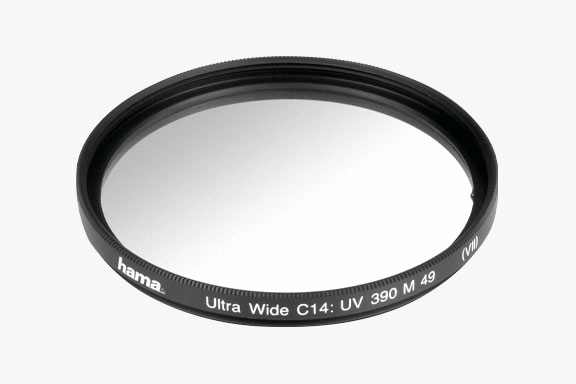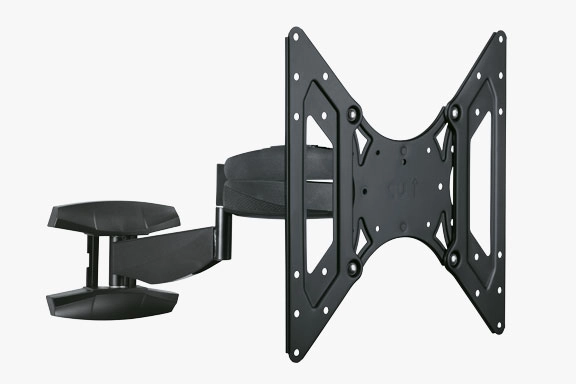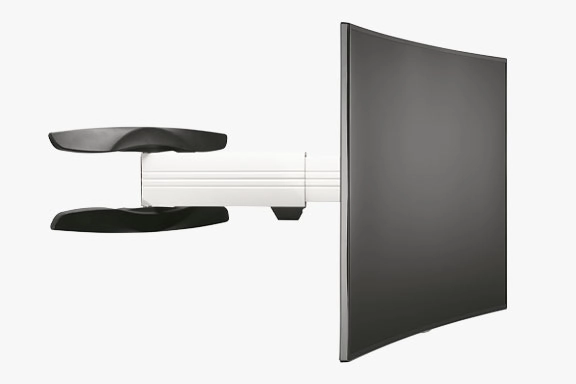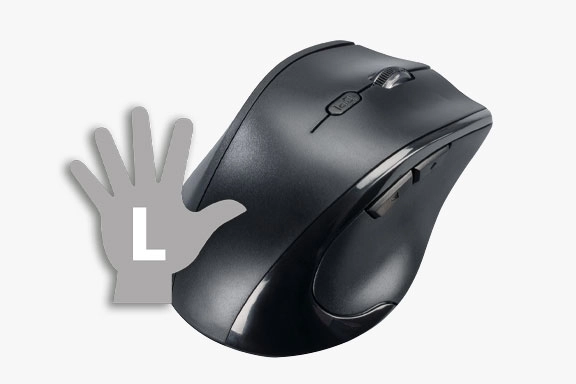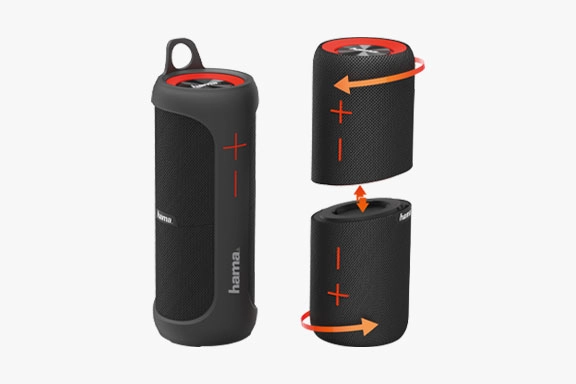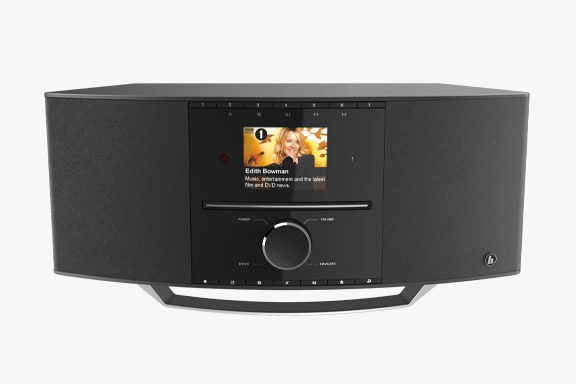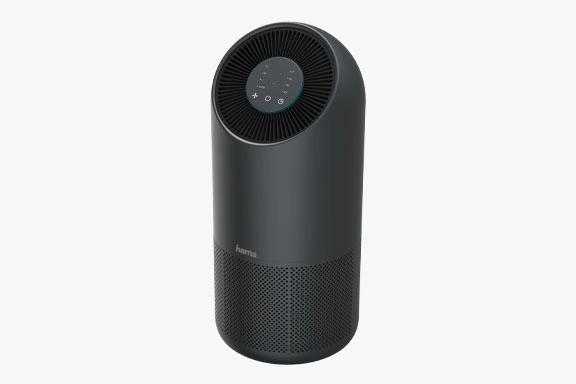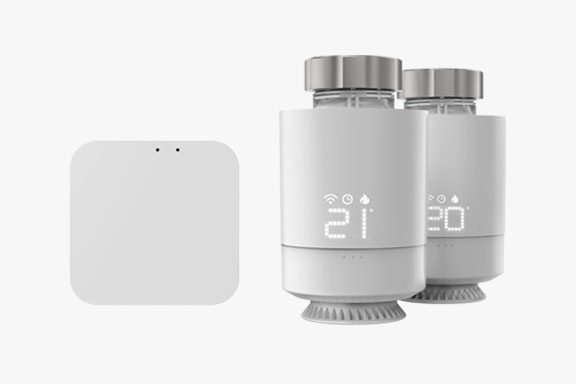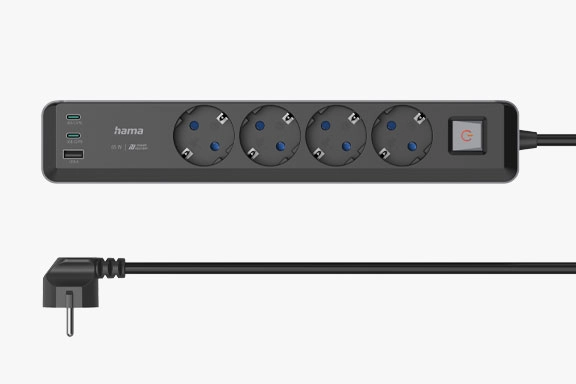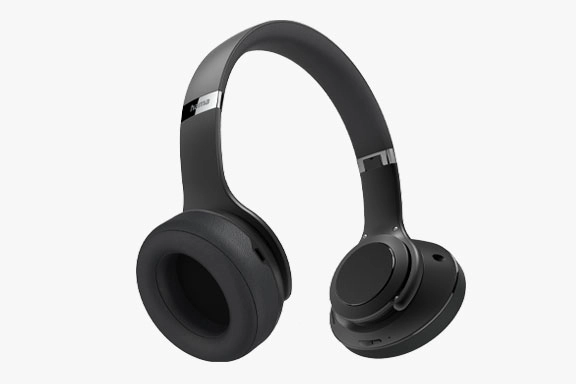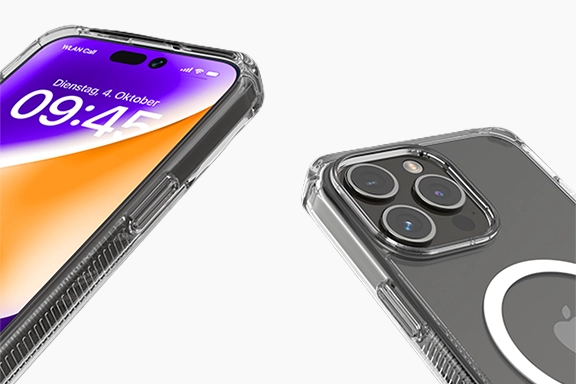Hama product milestones
Over 100 years of company history are marked by numerous products that reflect the respective spirit of the times and contribute to the success of the company. Here is a small selection of them
Pocket tripods and small ball joints have been part of the Hama range since 1923.
Hama launched the first synchronised powder flash unit in 1948.
The "Hexi" camera was introduced in 1953 and sold around one million times by 1959.
Hama developed and produced the first automatic cine film splicer in 1972. Film cutting and automatic gluing of both sides of the film ends become possible in one operation.
The amazingly simple and quick-to-use slide framing system "Hamafix" conquered the photo world in 1975.
Rudolph Hanke published his book "Filter Fascination" in 1977, in which he presented photo filters and their effects. It was published in numerous languages and became a best-seller among photography enthusiasts.
The first cable was added to the range in 1978 under item number 3330. Top Line cables with gold-plated contacts and soldered joints have been the ultimate in best picture and sound transmission for many years, starting in the 80s.
The two devices "Videocut 10" and "Videocut 50" enabled video editing and the insertion of text and graphics into films from 1987.
At photokina 1988, the "Biomat" was presented, a cleaning spray without propellant gas. You pumped it up by hand, the air pressure then escaped again via the spray nozzle and cleaned lenses, for example, in an environmentally friendly way.
The first "Magnum" battery video lights put many a film scene in the right light from 1989 onwards.
The later best-selling video editing device "Videocut 200" was presented at the IFA in Berlin in 1991.
From 1991 onwards, Hama developed the tripods of the "Delta Pro" series in a modular system for the first time and thus appealed to hobby and semi-professional photographers.
In 1995, Hama presented the "Mobile Safe" hands-free kit for mobile phones at CeBIT in Hanover.
The hands-free kit "Liberty 2000", which only required the specific mobile phone charging cable to be replaced, became a bestseller in 2000.
For perfect presentations with notebook and projector, the "RF Optical Presenter" was added to the programme in 2002. By means of an optical sensor, the computer's mouse pointer could be guided via radio. The principle of an optical mouse was reversed and the thumb was guided over the sensor field.
Expensive special numbers, area codes or international numbers caused telephone bills to go up in 2003. With the "CallBlocker", these numbers could be blocked individually on the telephone.
In 2003, Hama introduced the handy "DataSafe", with which data from memory cards could be burned onto a CD without an additional PC. It read eight different memory cards (CF I and II, MMC, SD, MicroDrive, Mstick, Mstick Pro and SM) in four slots. The integrated CD-RW burner unit instantly backed up data to CD at the touch of a button.
In 2003, PDAs and handheld PCs were the order of the day. Hama supplemented these with a foldable infrared keyboard, making it much easier to enter texts and appointments.
As early as 2003, Hama launched a USB webcam and talked about making communication via the Internet more personal.
The flat, silver-coloured "Flash Watch" wristwatch with integrated 128 MB memory and built-in USB 2.0 connection cable was the mobile and ultra-fast data carrier par excellence in 2003.
In December 2003, Hama launched the first HDMI cables. All audio and video signals remained purely digital and were transmitted at up to 5 Gbit/s. This set a clear example in terms of quality, speed and networking.
In 2004, MP3 files, photos and films from the PC could be played on the TV with the "PC-TV Multimedia Kit". The PC was connected to the TV via a 10-metre cable and the PC picture positioned itself automatically. The infrared remote control not only switched the computer on and off, but also controlled it like a mouse, but from the comfort of your sofa.
The business card scanner, the size of a cigarette packet, saved you the hassle of typing in addresses in 2004. It was connected to the PC via USB, scanned cards up to DIN A8 and automatically assigned the results to fields such as name, address. Contacts could be managed directly, exported to various mail programs or sent to a mobile phone or PC via infrared.
In 2004, Hama introduced its first own-brand MP3 player, the "DMP-100", which is sold in a bundle with a 32 MB MMC card.
With DVB-T, the new digital television format, indoor aerials are coming back into their own. In 2004, Hama introduced a silver-coloured active designer aerial in flat format.
Whereas until now each digital camera required its own charger, in 2004 Hama introduced "Digi Combi I", a model that supplied almost all specific 3.6- to 7.2-Volt Li-ion batteries of the most common camera types with new energy by means of an enclosed adapter plate.
"Lypsi" became the epitome of a new generation of SAT multi-switches at the end of 2004. A characteristic feature of the new series was an LED that signalled the current consumption. Thanks to DiSEcQ-2.0, the LYPSI multi-switches communicated control commands bidirectionally with connected components and were thus ideally equipped for all control and switching applications.
TV films being interrupted by loud commercials was a common annoyance in 2005. A small box for around 25 Euros provided a remedy. The silver-coloured "Audio Level Limiter" was simply plugged in between the signal source (e.g. SAT or DVB receiver) and the TV.
No uniform standard for mini-USB had been defined yet in 2005. The 39733 cable solved connection problems with a universal, star-shaped adapter, combining the five most popular mini-USB plugs at the time.
Small, light, quickly ready for use and a smart solution in 2006 was the five-centimetre bottle head tripod weighing just 46 grams. It helped to take successful party pictures with the compact digital camera.
With the Nano Bluetooth dongle from 2007, the name said it all. It ensured wireless data exchange and, at 19 x 13 x 4 mm, could remain on the notebook without getting in the way.
In 2007, the motto for the new "Defender" camera bag series was "Professional bags from the bag professionals". Eight bags, two backpacks and two lens cases impressed with innovative and well thought-out equipment details.
With its digital picture frames, Hama was showcasing new ways of presenting pictures from the digicam perfectly at CeBIT 2007 – without a PC or notebook.
Hardly any console promised as much gaming fun in 2007 as Nintendo's Wii. Appropriately, Hama presented boxing gloves, pistols, swords and a steering wheel at the Games Convention in Leipzig.
In times of hard disk or DVD recorders, home-made films were no longer in vogue. With the "Video Editor" in 2007, the old strips could be easily digitised and transferred to CD, DVD or hard disk.
In 2008, Hama created the "Piccolino", an extremely compact USB car charger that disappears completely into the cigarette lighter socket.
In 2009, the "Classic" solar charger became an environmentally friendly energy supplier for mobile phones and MP3 players.
The "DCCSystem" cable release, introduced by Hama in 2010, scored with a special feature: for a new photo camera, only the cable needed to be changed. This was available separately for all conceivable camera models.
Germany in football fever. Equipped with a notebook and the DVB-T stick "Nano", you wouldn't miss a match in South Africa in 2010, even in the office, on the terrace or in the beer garden. Even the annoying plugging and unplugging was no longer necessary, as this tiny device barely protruded from the USB socket and could thus remain there permanently.
First-person shooters were booming in 2012, including on the Xbox 360 and PS3, but gamepads didn't give the same fast reactions as a mouse and keyboard. With the Hama "Speedshot" converters, these could be easily connected to the consoles in the living room.
PC mice and keyboards made of bamboo are not only a benefit visually, but also for the environment. The "EcoLine" product range in 2012 also included mobile phone cases made of Liquid Wood and notebook cases made of recycled PET bottles.
If the PC only has two USB sockets, but the mouse, keyboard, speakers and scanner need to be connected at the same time, a USB hub can help. The "Flower" model provided a nice splash of colour on the table in 2013, with the four colourful USB sockets arranged like a kind of small flower vase.
In 2013, the scanner mouse "MySCAN" proved to be a real hit. Notes, texts, tables and pictures could also be scanned and processed with the computer mouse.
Photo filters were also in demand in 2013. A professional series for professionals and demanding amateur photographers included HTMC-coated L-Protect filters for permanent retention on the camera, UV 390-Protect filters with C14 coating layers and eightfold-coated Pol-Cir filters.
In 2014, the ultra-flexible TV wall mount 118636 wowed home cinema fans. Thanks to the integrated high-performance gas pressure spring, the TV set could be adjusted not only to the right and left, but also up and down. Perfect for changing perspectives.
The new "curved TVs", TVs with curved screens, were moving into living rooms. In 2015, Hama introduced the matching wall mount. The Fullmotion version could be moved all around, had a support arm that could be extended to around 70 centimetres and could be laid flat against the wall using a special folding mechanism.
Bluetooth keyboards as a practical addition to tablets were much sought-after products in 2015.
In 2017, a computer mouse for left-handers appeared in the form of the new "Riano" model. The specially adapted fit of the model relieved the hand, prevented tension in the arm and shoulder and prevented unnecessary dislocations with the fingers.
Smart products are conquering private households. Hama presented the two voice-controlled soundbars "Sirium 3800" and "Sirium 4000" with Amazon Alexa integration at IFA 2017.
The waterproof Bluetooth speaker "Soundcup-D" could be split via a click system and offered true wireless stereo sound for music it received from a smartphone, tablet or notebook in 2019.
The digital radio "DIR 3510" from 2021 not only receives audio signals, it can also send them. Music is streamed from end devices, but can also be sent from there to other Bluetooth headphones or speakers. This way, the same music can be heard in different places at the same time.
In keeping with the MagSafe technology that Apple used from the iPhone 12 onwards, Hama launched "MagLine" in 2021, a complete line of accessories with cases, sleeves, holders and chargers.
The "Smart" air purifier was a child of its time in 2021. In the midst of the Corona pandemic, it provided fresh air with a triple filter and could be operated via app or voice control.
How does home heating become smart and an energy-saving helper? Since 2021 with the Hama heating control, where the thermostats of the radiator are simply exchanged for new ones, which can then be controlled via the Hama Smart Home app.
A notebook with 65 Watts can be charged directly at the power strip presented at the end of 2022. In addition to the normal sockets, it also has three USB sockets.
The ear cups of the "Passion Turn" Bluetooth headphones, which launched at the end of 2022, can be turned outwards. With a flick of the wrist, the headphones become a loudspeaker and the private listening pleasure becomes fun for the whole party.
At IFA 2024, Hama is placing special emphasis on "Made in Germany". More than 60% of all Hama cases will be produced in Germany. Robust, perfectly fitting, UV-resistant and with short distances in the supply chain.
